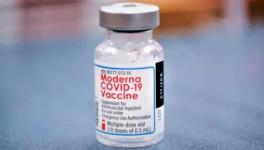Can Public-Private-Partnerships Help Stop Non-communicable Diseases?
The 144th Executive Board meeting (EB 144) of the World Health Organisation (WHO) in January 2019 followed up the high-level meeting of the United Nations General Assembly on ‘Prevention and Control of Non-communicable Diseases (NCDs)’.This UNGA meeting was held on September 27, 2018 at New York, with a focus on reviewing the global and national progress achieved in putting measures in place that protect people from heart and lung diseases, cancers and diabetes.
As the world increasingly grapples with the issue of non-communicable diseases, the steps taken by the WHO in some of its interventions have been in the wrong direction. This article discusses WHO’s collusion with industry, challenges in implementing ‘Best Buys’ and an increased push towards public-private partnerships (PPPs).
Good Guys
One wonders as to how a partnership to prevent and control NCDs can be created with organisations that are actually responsible for the problem?
This was the main question that several Member States (MSs), and the People's Health Movement (PHM), raised in the 144th Executive Board meeting of the WHO. The Organisation has been enthusiastically engaging in the now-so-popular but eternally fuzzy ‘multisectoral collaboration’, heavily skewed towards the private sector. In the document ‘Follow up on the high level meetings of the UN General Assembly: Prevention and control of NCDs’, the enthusiasm for PPPs is loud and clear, terming it essential in achieving SDG 3.4. WHO’s strategy is to hold six-monthly meetings with various industries – food and beverage, alcohol and sport. In June 2018, for instance, WHO met with the alcohol industry; all main alcohol producers were the attendees. For the food and beverage industry meeting: the list of attendees included Danone, PepsiCo, Coca Cola, Cargill, among others. WHO also met with the pharma companies to improve access to medicines and with the sport industry to mainstream the physical activity.
While such ‘multisectoral collaboration’ could be beneficial for the private sector, it is less likely that such engagement with the private sector will be equally favourable for effective health policies. It is doubtful that such a strategy will have any positive impact on implementing an evidence-based programme that aims at curbing the rise in the NCDs (especially in L&MICs). On the contrary, it is likely that such strategy will be shaped to suit the needs of the concerned for-profit organisations. Perhaps, the idea is that the presence of big food, big soda, and big alcohol (big tobacco must feel unjustly left outside?) will allow for tackling the ‘commercial determinants of health’ and improve NCD prevention.
In fact, these dangerous liaisons came on top of the bizarre requirement in 2014 to register and publish the ‘contributions’ of non-state actors (including private sector entities) to the prevention and control of NCDs (see Annex 3 of EB144/20). PHM has already raised concerns over this.
Best Buys
WHO has suggested a set of cost-effective, affordable and evidence-based “best buys” to put countries on a sustainable path to attain Sustainable Development Goal targets. These include interventions regarding smoking, tobacco use and second-hand smoke, use of alcohol and psychoactive drugs, excessive intake of fats, sugars and salt. In addition, it has come up with fiscal measures, such as increasing effective taxation on tobacco, alcohol and sugar-sweetened beverages, reducing healthcare costs and generating a revenue stream for development.
Annex 2 of the report presents updated evidence of the corporate sin taxes (alcohol, tobacco, sugar). It is argued that these will not only reduce consumption of unhealthy products and raise revenues for health, but also have equity-enhancing effects. However, some MSs have raised objections. For instance, Italy, has already expressed views opposing sugar taxes. Rejecting the updated draft Appendix 3 on methodological grounds, Italy argued the proposed change in nutrients intake was not in consonance with the country’s experience. Furthermore, there was no proved linkage between fiscal policies aimed at reducing sugar consumption and reduction of NCDs. In fact, NCDs had multifactorial causes and such fiscal measures could lead to other dangerous nutritive behaviours and unhealthy choices, particularly among the people in lower-income groups.
Do these argument sound familiar? Well, these are the arguments that are also being used by the industry.
And, as expected, during the EB144, Italy clarified that they intend to use the ‘best buys’ recommended by WHO, but they refused to introduce sugar or salt taxes for lack of evidence. USA seconded Italy’s interventions, and reiterated their position against taxes.
PHM does believe that best buys are a way forward, but it is a weak strategy that does not address the deeper causes. Many MSs mentioned that while implementing best buys, the countries faced opposition from the industries. Slovenia asked for better support from WHO to face such challenges. In light of this, is sitting at the table with the industry, once again, the right choice?
Additionally, the policy capacity required to implement the best buys through health system programs, intersectoral collaboration, regulation and fiscal strategies is immense, which most L&MICs lack and WHO’s support becomes essential.
In addition, the whole discourse is missing the concern regarding food security and equity of access to healthy food, which can only be ensured by addressing the social and structural determinants of health. Strengthening comprehensive primary health care should be given greater priority in the NCD strategy.
NCD budget
The fact that the WHO is facing a financial crisis is well known. However, the bi-annual budget allocation for the NCDs, presented during the EB144, seems ridiculously disproportionate when compared to other programmes.
However, what is interesting is that the new strategy used by WHO to secure resources. It is hard not to speculate who the WHO may be engaging with to get an 8% increase in donors’ funds. The WHO needs to be more friendly with the corporates in such a case.
While there is a chance of MSs actually addressing the commercial determinants of NCDs, WHO’s donors remain reluctant to support any real action.
WHO can certainly do better on NCDs with less focus on PPPs and bolder leadership in creating a new economic order catering to people’s health.
Also read: ICD-11, a Milestone in Era of Digital Technology: WHO
Get the latest reports & analysis with people's perspective on Protests, movements & deep analytical videos, discussions of the current affairs in your Telegram app. Subscribe to NewsClick's Telegram channel & get Real-Time updates on stories, as they get published on our website.
























